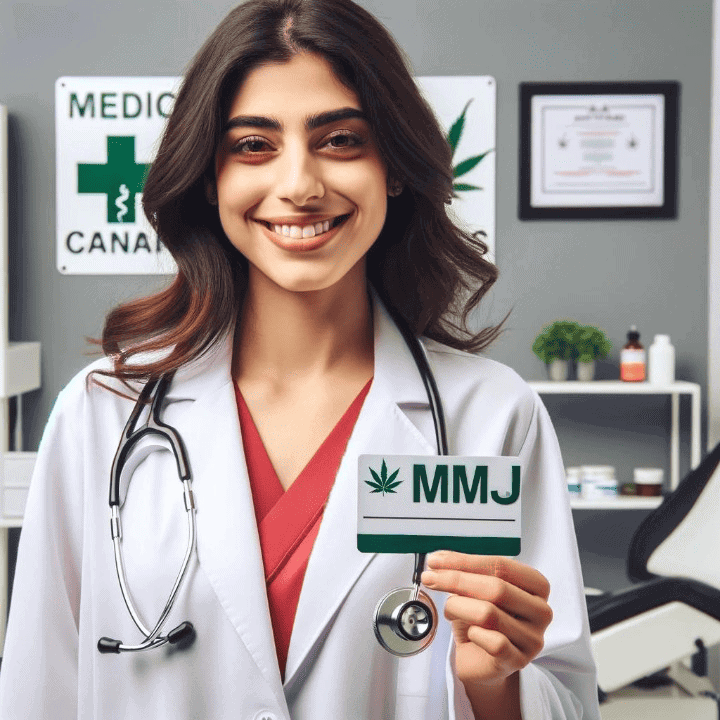- [email protected]
- (619) 304-4004
New York’s cannabis management emphasizes public health and safety, regulating medical and adult-use marijuana. Understanding specific conditions and their treatment guidelines is key for those seeking medical marijuana in the state.
Medical Marijuana in New York

In New York, the Office of Cannabis Management oversees the medical, adult-use, and cannabinoid hemp sectors, focusing on public health and safety. While specific details on conditions qualifying for medical marijuana were not directly available, the framework suggests a comprehensive approach to managing cannabis use.
For those seeking medical marijuana recommendations, understanding specific qualifying conditions, along with their dosage and administration guidelines, is essential. This framework ensures patient safety and compliance with state regulations, reflecting New York’s commitment to responsible cannabis management.
New York State has transitioned away from a fixed list of qualifying medical conditions for medical marijuana use. The state now empowers healthcare providers to make individual assessments regarding whether a patient’s condition could benefit from medical marijuana treatment. This change signifies a more personalized approach to medical cannabis prescriptions, relying on the professional judgment of certified healthcare practitioners.
The determination of specific conditions that qualify for medical marijuana treatment is now solely at the discretion of healthcare providers registered to practice in New York. These providers assess patients’ conditions and determine if they could benefit from medical cannabis. This process aligns with the broader shift in New York’s cannabis policy, focusing on individualized patient care.
Healthcare providers must be registered, licensed, or certified by New York State to prescribe controlled substances and must have completed an Office of Cannabis Management (OCM) approved educational course on the medical use of cannabis.
The New York Department of Health maintains a list of consenting medical cannabis program practitioners who are authorized to certify patients. This list is available to the public.
In this updated framework, there’s no ongoing process for adding new qualifying conditions since the decision rests with individual healthcare providers. Patients seeking medical marijuana certification can use telemedicine services to consult with eligible providers.

Medical marijuana has been studied for its potential benefits in treating various specific conditions, with varying degrees of effectiveness and patient experiences.
Patient experiences with medical marijuana indicate significant improvements in overall quality of life and reductions in symptoms like fatigue, anxiety, depression, and chronic pain after consistent use. However, these improvements could be influenced by a placebo effect.
It’s important to note that the effectiveness and patient response can vary greatly depending on the individual and the specific condition being treated.
The response of specific medical conditions to different strains or forms of medical marijuana can vary significantly. This variation is largely due to the diverse cannabinoid profiles and terpene compositions found in different strains.
Here’s an analysis of how various conditions may respond to different types of medical marijuana:
Strains with higher THC levels are often more effective for pain relief and appetite stimulation, making them suitable for conditions like chronic pain and cancer-related symptoms. Conversely, strains high in CBD are preferred for conditions like epilepsy and anxiety, as CBD can reduce seizures and anxiety without the psychoactive effects of THC.
Indica strains are typically associated with more sedative effects, which can be beneficial for patients with insomnia, anxiety, or muscle spasms. Sativa strains, known for their energizing effects, may be more suitable for conditions like depression, fatigue, and certain types of pain.
Hybrid strains, which combine elements of both Indica and Sativa, can offer a balance of effects. These strains can be tailored to address specific symptoms like pain relief during the day without excessive sedation.
Terpenes, the aromatic compounds in cannabis, also play a role in the plant’s therapeutic effects. For example, myrcene, commonly found in Indica strains, has relaxing properties, while limonene, found in Sativa strains, is known for mood elevation.
The form of medical marijuana (e.g., oils, edibles, tinctures, vaporized) can also influence its effects. For instance, edibles may have a longer onset time but provide longer-lasting relief, suitable for chronic conditions, while vaporized cannabis offers quick relief, beneficial for acute symptoms like breakthrough pain or nausea. Here’s a brief overview of various forms and their characteristics:
It’s important to note that the response to medical marijuana is highly individualized. Patients may react differently to the same strain or form, and it often requires a period of trial and adjustment to find the most effective treatment. Consulting with a healthcare provider knowledgeable in medical cannabis is crucial to tailor the treatment to the patient’s specific condition and needs.

Determining the appropriate dosage of medical marijuana in New York for specific conditions involves several key factors. It’s a highly individualized process, as people react differently to cannabis due to various physiological and psychological factors. Here are the main considerations:
The nature and severity of the medical condition being treated play a crucial role. For instance, chronic pain might require higher doses compared to mild anxiety.
Each person’s endocannabinoid system and metabolism are unique, affecting how they respond to cannabis. Some individuals may require very small doses, while others need higher doses to achieve the desired effect.
Different strains of cannabis have varying levels of THC (tetrahydrocannabinol) and CBD (cannabidiol), which can influence the therapeutic effects and side effects. The ratio of THC to CBD can significantly affect the dosage and overall experience.
The form in which cannabis is consumed (e.g., edibles, tinctures, vaporized) affects absorption rates and onset of effects. Inhalation methods typically require lower doses compared to edibles due to faster absorption and onset.
A patient’s history with cannabis can impact their tolerance. Regular users may require higher doses compared to new or infrequent users.
Age and body weight can influence how the body metabolizes cannabis, affecting the appropriate dosage.
Other health issues, especially liver and kidney function, can affect cannabis metabolism and might necessitate dosage adjustments.
Interactions with other medications can influence the effectiveness and side effects of cannabis, requiring careful consideration in dosage determination.
The therapeutic goal (e.g., pain relief, anxiety reduction, sleep improvement) and the need to minimize side effects are crucial in determining the right dose.
Starting with a low dose and gradually increasing it (“start low, go slow”) is a common approach to find the minimum effective dose that provides relief without undesirable side effects.
Given these variables, it’s essential for patients to work closely with healthcare professionals experienced in medical cannabis to determine the most effective and safe dosage. Regular monitoring and adjustments may be necessary, as tolerance and individual responses can change over time.
Additionally, legal and regulatory frameworks in different regions may impose certain limitations or guidelines on the use of medical marijuana, which should be taken into account.
The approach towards medical marijuana treatment in New York has shifted significantly. The state no longer specifies qualified medical conditions for eligibility. Instead, the decision to recommend medical marijuana now rests with the discretion of certified medical practitioners. These healthcare providers assess individual patient cases to determine the suitability of medical marijuana as a treatment option.
Patients no longer need a traditional medical marijuana card. The process involves obtaining a medical marijuana certification from a registered healthcare provider. This certification, which contains a registry ID number, is then used by the patient to purchase medical marijuana products from licensed dispensaries.
The key change here is the removal of the need for patients to register separately with the state for access to medical marijuana; the certification from the healthcare provider automatically enrolls them in the program, streamlining the process.
This updated approach reflects a more personalized and flexible medical framework, focusing on individual patient needs and the professional judgment of healthcare providers.
https://cannabis.ny.gov/medical-cannabis-program-faqs
https://cannabis.ny.gov/medical-cannabis
https://cannabis.ny.gov/patients

A1 Marijuana Doctors is an online platform, that connects marijuana patients to marijuana doctors in their state.

A1 Marijuana doctors is an online platform that connects medical patients to medical marijuana doctors. We offer a quick & easy way to apply for a medical marijuana card in all legal states.
Social Links
Contact Us
Quick Links
Trusted By




This website does not sell medicine nor controlled substances. It is a network of doctors & nurse practitioners, not a pharmacy / dispensary.
Copyright ©2023 A1 Marijuana Doctors. All rights reserved.